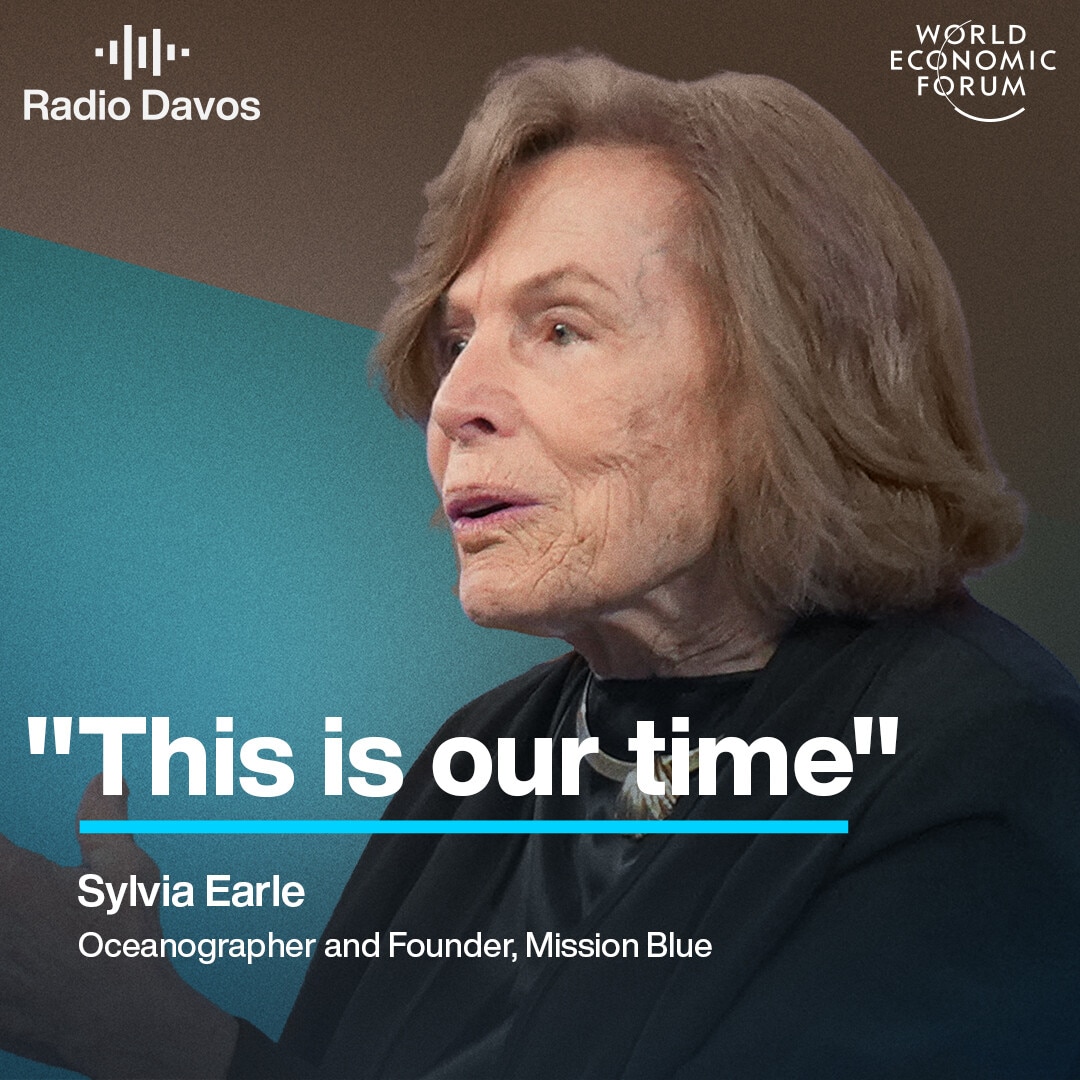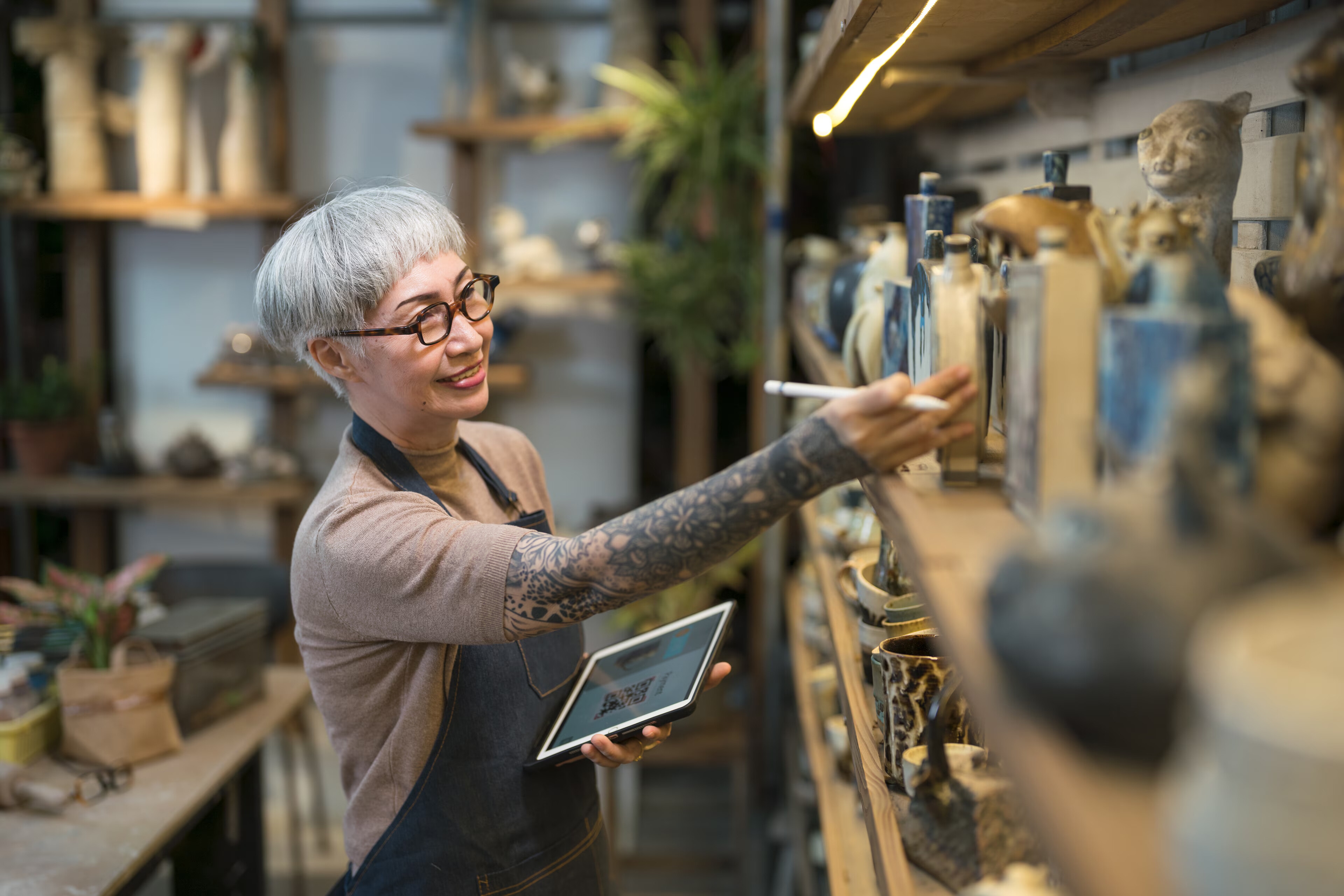Apps, bots and 'finfluencers': how to navigate the changing world of investing
ポッドキャスト・トランスクリプト
This transcript has been generated using speech recognition software and may contain errors. Please check its accuracy against the audio.
Laura Astorino, Managing Director, Accenture: We're seeing that more and more younger and ethnically diverse investors are coming in. This is such a key point, specifically because we want to encourage financial literacy at a younger age.
Robin Pomeroy, host, Radio Davos: Welcome to Radio Davos, the podcast from the World Economic Forum that looks at the biggest challenges and how we might solve them. This week: technological and societal changes are transforming the way people approach investment.
Stephanie Guild, CFA, Head of Investment Strategy, Robinhood Financial: In 1980 the average commission rate to trade a stock was like 1%, and today it's essentially zero.
Robin Pomeroy: Welcome to the world of investment apps, robo advisers and finfluencers.
Stephanie Guild: Finfluencer? A social media influencer that focuses on financial advice. It's grown to a $104 billion industry.
Robin Pomeroy: Two experts on retail investing tell Radio Davos how financial markets are ever more accessible and, to use their phrase, democratized,
Laura Astorino: They have the ability to test, you know, with very low amounts. You could have a dollar and start investing. And it gives a little bit of a safe space to be able to test, learn, grow, gain that confidence.
Robin Pomeroy: Subscribe to Radio Davos wherever you get your podcasts, leave us a rating or a review or visit wef.ch/podcasts where you will also find our sister podcasts, Meet the Leader, Agenda Dialogues, and the World Economic Forum Book Club Podcast.
I’m Robin Pomeroy at the World Economic Forum, and with this look at the changing world of retail investing...
Stephanie Guild: Love it or hate it, that's where they are. Think of ways to enter into that space.
Robin Pomeroy: This is Radio Davos.
If you’re lucky enough to have some spare cash to invest, how do you decide where to put it? In the past few years the answer to that question may have changed. The rise of robo-advisers - algorithms that can guide you - and of finfluencers - social media influencers keen to impart their wisdom - have transformed the way many people manage their money.
To find out more about the big changes happening in financial markets and the way individuals approach them, I spoke to Steph Guild, Head of Investment Strategy at the company Robinhood Financial, and to Laura Astorino, a Managing Director at Accenture. Here’s our conversation.
Robin Pomeroy: Today on Radio Davos. We're talking about investment, investment by retail investors. That means normal people who are investing money. A lot of people are reluctant or confused or wary of investing. And I'm going to talk about that to two experts in the field. Joining me down the line, are Steph Guild, who is CFA at Robinhood Financial. Steph, how are you?
Stephanie Guild: I'm doing well, Thanks for having me.
Robin Pomeroy: Thanks for joining us. And we're also joined by Laura Astorino, who's a managing director at Accenture. Laura, how are you?
Laura Astorino: I am great and thank you for having us. This is a great discussion. I love the way you positioned it. We are here to help!
Robin Pomeroy: Okay. Let's set out the stall of what we're talking about here today. There is a policy paper called Future of Capital Markets: Democratisation of Retail Investing. I've already lost half the audience just with the title!
For a start, what is retail investing? And then we'll talk about why does it need democratisation. I say that because a lot of people think of investing - that's people who are lucky enough to have loads of money, they don't need any help with that, do they? Or if they do, they can pay for it. What is retail investing and what is this paper about? What is it telling us?
Laura Astorino: I'm happy to start. Very easy answer. It's non-professionals, individuals, everyday individuals who are actively participating in the market, buying, selling stocks, ETFs, mutual funds, either on self-directed brokerages or apps or even through financial advisors.
So it does stretch a range from how they engage in the market. But everyday investors who are looking to invest their money and do something a little bit more with the funds and the income that they get day to day.
We do have some interesting research that I'd love to share with you from recent FINRA research that they've done. FINRA is a financial institution that regulates those markets. So recently they came out just trying to capture this new wave of retail investors and specifically a little bit of the demographics.
We're seeing that more and more younger and ethnically diverse investors are coming in as to what we had before. This is such a key point, specifically because we want to encourage financial literacy at a younger age. The earlier we get to that, the better we'll be in the market and evolve this market specifically with capabilities and what investors can do and the return that they'll see.
The other big point that we saw, Robin, was, as we're looking at users who have low or no fee stock trading apps who are using them, it grew dramatically. So in 2019, they had about 61.9 million. In 2020, we saw 91.5. So that's close to a 50% increase. So we're seeing more and more active participation in the market.
Robin Pomeroy: So that's a global figure. So we're not just talking about the U.S. here. Around the world you're talking of, it's not a doubling, but it's it's getting on for that, of people using apps for stock trading that are either free or they're pretty cheap. So is this all about apps now for people who have a smartphone anywhere in the world where these apps are available? Is that what the big change is here that's bringing these people who didn't used to ever think of investing before, or are there other elements to it?
Stephanie Guild: I think accessibility is certainly part of it. And the growing use of a phone for everything that we do. I also think it's the changing cost of participation. In 1980, the average commission rate to trade a stock was like 1%, and today it's essentially zero.
Laura Astorino: I think talking about the technology has drawn people in. I think there are other factors that, quite frankly, have started to push individuals to think about investing this way. So think about the decreasing defined benefit pensions. They're forcing people to think about their retirement goals and how to achieve them in a different way. And so investing becomes such a great part of that picture and story to enable them to think through that.
Stephanie Guild: You know, the Internet was just started being used in the nineties. That's when you had ETFs coming out for the first time. E-Trade was the new thing. I remember as a kid trying to get my dad to open an account just to try it. And so I think it was like a lot of things that the nineties did, it pre-staged the sort of eventual technology boom that we had. And I think social media, which I know we will probably touch on a lot later, also has had a big influence on this.
Robin Pomeroy: There must be a whole multitude of different types of people who are choosing to come into this area that weren't there before. Now some of them are worried about they know their pension is not going to be enough. There's going to be others who - maybe let's go into the social media rabbit hole now. Isn't it very often a get rich quick thing, though? They'll hear, oh, I bought a bitcoin or some kind of stock. The internet's ablaze by everyone's buying up even an improbable company's shares. Things like that strike me who's by no means any kind of expert and I value your opinions, that doesn't seem like healthy investing. Isn't that what a lot of these people are getting into? Or is that not the case?
Stephanie Guild: I think it was certainly part of it, especially in time of COVID. I can see the data, at least in the US, for example, there was a growth of savings and a lot of that was the stimulus that people were able to have some extra money sitting around a little more time in their hands and access that they hadn't had before. So I think there's certainly an element of it, but sometimes you do need to learn some lessons along your financial journey. But we have seen a lot of our own customers learn a lot from this and still continue to invest in their future. You see it in the finfluencer part of the market.
Robin Pomeroy: A lot of people won't have heard that before. A 'finfluencer'?
Stephanie Guild: A social media influencer that focuses on financial advice. There isn't a lot of regulation on influencers. So that's something I think that you may see potentially come down the pike. That being said, I mean, it's grown to $104 billion industry. It's something to be noted because if there can be, I'd say a partnership, between traditional financial institutions, technology firms and those that have the reach into the next generation, I do think it actually creates a huge opportunity.
Robin Pomeroy: So what's your advice? I've never seen a finfluencer, but imagine I go onto whichever social networks they are and I'm taken in by, you know, someone charming and who's going to make me rich. How would I know whether I should follow their advice or not?
Stephanie Guild: My advice would be to do your own homework. I don't think it's a bad thing to hear about different aspects of investing or longer term planning and getting tips from outside.
It's sort of an exaggeration of people getting tips from their friends over the last several decades on financial aspects and investing aspects. And think about it in the context of your own personal financial situation. Certainly what's good for one person isn't necessarily good for another.
Laura Astorino: If I might add, I would say this is at the heart of our discussions right now. You know, many firms across the industry, specifically because financial literacy, education, is such a critical component to not only individual investors gaining the confidence and starting to trust sources, as you're saying, but also helping them invest responsibly.
To your point, lots of stories around Bitcoin, and some have learned through their own experience with Bitcoin, I'm sure, are now taking a more cautious approach. But quite frankly, we want to prevent a little bit of that, what feels a little bit maybe just jumping on the latest trend and and taking that big of a risk and maybe coming out with a big loss. We talk about financial literacy quite a bit and it's us talking about it, but also in such a way that we empower investment firms to be able to help individual investors to get there with literacy as well as a regulating body.
We need to all do our part so that we are all being responsible across all of the investments.
Robin Pomeroy: 60% of U.S. investors under the age of 35 use social media as a form of investment advice information. Not surprising. I mean, that's where all of us are getting so much information about everything now. So let's talk about the young people, the profile of young people investing. Who are these people? What's your typical young investor?
Stephanie Guild: So what we see and this is, again, sort of I think it's been evolving as more and more social media use has happened. But also the markets have reminded us of the lessons of investing, that the risks that come with the rewards, but they tend to be still motivated by their goals, which is no different than, you know, previous generations. They're also influenced by trends that can be a little bit more short term focussed.
One thing we have tried to do is provide more education, like Laura was saying,to say like, you know, for a retail investor for any investor time can be one of the best tools you have. You know, the longer your time horizon can be, the more opportunity, generally speaking, that you can have. Understanding where they're coming from and then providing kind of that perspective, I think is is something that we've tried to do, at least
Laura Astorino: What we're seeing in this profile of younger investors. I think, first of all, we keep going back to the technology and the accessibility. They have the ability to test, you know, with very low amounts. You could have a dollar and start investing. And it gives a little bit of a safe space to be able to test, learn, grow, gain that confidence, but start to work towards that investment plan for you and getting the return that you want to see. So I think that's been really exciting.
The other piece that we're seeing that is near and dear to my heart, these young investors are all about, you know, great causes, sustainability, they want to contribute back and they want to make sure that whatever they're contributing to is not harming the environment or things that they truly care about. So that's been another great trend that we've seen. So that's super exciting for us to see them plugging in and starting to think about those types of things through the investment capabilities.
Stephanie Guild: One other thing, Laura, what you said kind of reminded me is that the other main evolution of the new generation of investing is really the the kind of desire for community. And that's why I think you've seen Reddit and other forums that are - really like people enter and talk to each other and it becomes a community for them, not just about the topic of investing, but they get to know each other virtually and it creates a sense of connection, and I really do. I think that's one of the reasons also why social media has been such a popular place for the generation, because a lot of times the influencers themselves show real human attributes. It's not scripted, planned. It's that kind of sense of connection and relatability. It's really resonating with the next generation.
Robin Pomeroy: And so what kind of things are these people with their £1 or $10 investing in? What are they buying?
Stephanie Guild: One thing I would say that has surprised me the most is that they're they're really not different from other generations. They're investing in what they know and they use. We created an index to kind of track this and we publish it. It shows they're buying things they use: Apple... Generations have been saying, invest in what you know, I just think what they know is more technology, more things that are in their lives today than previous generations.
Robin Pomeroy: So are these young retail investors less savvy than the older generation, or are they are they more savvy? I mean, they're getting a lot of information. They have to sift through it, decide what's relevant to them, what's true, what's not true.
Stephanie Guild: In many ways, like when I see a lot of the things that they're buying, at least in our platform, it it tends to be, as I said before, the things that they're knowing and using, and they have the ability to quickly access the information.
So I actually think they're they're more knowledgeable than past generations simply because it's not just access to investing, but they have access to information too.
Laura Astorino: Maybe, Robin, I'll use my own example. For me, I know that at their age. Maybe I didn't have access or maybe was a little bit more difficult to get some of that information, but I know that it wasn't a conversation. You know, and right now it is that at such a young age and it's exciting, right? That's the part that I feel like it makes them a little bit more savvy at earlier ages because it's all around them.
Now, they do have some challenges in, first of all, navigating through the mass amount of information that's available to them. And so that makes it, makes more work for them to figure out what to trust, what to rely on and what to do personally for them that makes sense for them. So I think it's kind of a double edged sword, if you will. Lots of great access. You know, everybody's in the conversation earlier, but you have to be smarter and to Steph's point, do a little bit more homework to figure out which path to take.
Robin Pomeroy: Let's move from the retail investors then to companies who may not have been aware of this until fairly recently that this was such a sizeable, important, quickly growing market. What would you say to companies who are in this sector? What should they be doing now that they know about this?
Stephanie Guild: I think there's been a little bit of a lack of willingness necessarily to go where where the investors are, which is perhaps like a little more social media areas. And so I would say: love it or hate it, that's where they are. And I think there's a huge opportunity to relate and to provide education and potentially gather your future clients.
I would say think about ways to enter into that space in a way that's authentic for the company and be able to provide the help sorting through all the information, as Laura said, is out there.
Laura Astorino: I think they have such a critical role to play in this evolution, to be quite honest, and how investing is changing. I think about 5 to 7 years ago when Robos became available and some of the traditional investment firms, there was heavy debate. Do we need to be with them? Will this really take off? And, you know, and it was a real struggle for them to really think through and in some cases, some firms kind of dismissed that as a trend or a fad.
Dismissing is definitely not the way to go. I actually think that now where we're really talking about this hybrid advice concept. And so that's where institutions play such a critical role. So enabling some of those capabilities that make it easy, make it comfortable for individual investors and young investors to come in, but also offer that advice, human advice, that gives them that nice compromise and blend of lots of content - I can do something on my own if I'm confident, if I have questions, I can go back to someone and I actually get a little bit more confidence or answer that I'm looking for to help me personally with my plan.
So that's where I think they play such a critical role right now. And I think as Steph was saying - you've got to get on board. The how is always the tricky question, but everyone should be getting on board at this point.
Stephanie Guild: And one thing I'm actually very excited to watch in how it all unfolds is, you know, artificial intelligence has been the thing that's been all over the news lately with ChatGPT and Microsoft and Google. I mean, they're all in it - AI and machine learning and how that plays a role and what you just said, Laura, about hybrid advice, I think it really allows companies to scale that and provide sort of more personalisation for a lot more people than perhaps in the past.
Robin Pomeroy: So let's bring it back to those retail investors now, to people like me, or much younger than me, but just as inexperienced, what would you say to them if they've heard this, thinking, you know, I do have a dollar to spare. Where should they start?
Stephanie Guild: If you can imagine the shape of a triangle, I sort of always start there. First and foremost, if you have a dollar to spare just make sure it's net of expensive debt. Make sure you focus on that.
Once you feel like you've got that under control, I do think a rainy day savings fund, which may be an old fashioned term, but a rainy day savings fund is very important to also have. And I kind of think of that as the foundation of this triangle. And it can be anywhere from three months worth of your monthly expenses to perhaps 12 months worth of your monthly expenses, something that just allows you to feel, I'd say, a little more free to actually make investments that have risk there. Once you do and how much that actually ends up being is really personal to you and your comfort level. But once you have that established, I sort of feel that the next layer is a diversified portfolio, and that's easily done through mutual funds, exchange traded funds. Really understanding what diversification means, which is having investments in lots of different areas that may behave differently, which allows you, I think, to sometimes better weather a storm that - naturally they happen. Markets have cycles.
Once you have that kind of established amount, and that is also dependent on you personally, I say that the tip of that triangle is your little bit riskier stuff. You can do the things that may be a little more illiquid or, you know, you buy that company that may go to 100 or zero. I've got my solid foundation, I've got my diversified portfolio, and I have the ability to take a little more risk. When you flip a triangle over, it doesn't stay up.
Robin Pomeroy: The pointy end of the triangle is the exciting bit, isn't it? And people might be tempted to throw a bet out on something like that. So your advice is establish that base first. And also interesting what you said - look at your debt situation as well. How much debt they have will determine how much money they may have to invest or not.
Laura Astorino: And just to add on one point people who want to jump in and have a fast return, they should probably not think about it that way. They should think about this as more of a horizons, and it's going to take time. So don't think you're going to start investing today, in a month you'll be rich. That's not - obviously, to Steph's point, the triangle takes time. And so I would take that into consideration as people are starting to come in, expect that, you know, there's horizons that you should be considering and thinking about six months, a year, two years, and it's a long journey to kind of jump on and eventually get there.
Robin Pomeroy: People can find the report Future of Capital Markets: Democratisation of Retail Investing on the World Economic Forum's website. Thanks very much for joining us on Radio Davos, from Robinhood Financial Steph Guild, and from Accenture, Laura Astorino, thanks for joining us.
And if it’s time you are looking to invest, you could do worse than spending it listening to our back catalogue - get that at wef.ch/podcasts where you will also find our sister podcasts, Meet the Leader, Agenda Dialogues, and the World Economic Forum Book Club Podcast.
You can subscribe to all of them wherever you get your podcasts and when you do, please leave us a rating or a review. And join the conversation about podcasts on the World Economic Forum Podcast Club - look for that on Facebook.
This episode of Radio Davos was presented by me, Robin Pomeroy. Editing was by Jere Johansson. Studio production by Taz Kelleher.
We will be back next week, but for now thanks to you for listening and goodbye.
Scroll down for full podcast transcript.
If you’re lucky enough to have some spare cash to invest, how do you decide where to put it? In the past few years the answer to that question may have changed. The rise of robo-advisers - algorithms that can guide you - and of 'finfluencers' - social media influencers keen to impart their wisdom - have transformed the way many people manage their money.
To find out more about the big changes happening in financial markets and the way individuals approach them, we talk to Steph Guild, CFA and Head of Investment Strategy at Robinhood Financial, and to Laura Astorino, a Managing Director at Accenture.
Thumbnail image by micheile dot com on Unsplash
Subscribe on any platform: https://pod.link/1504682164
Join the World Economic Forum Podcast Club
トピック:
金融と通貨システムその他のエピソード:
「フォーラム・ストーリー」ニュースレター ウィークリー
世界の課題を読み解くインサイトと分析を、毎週配信。
もっと知る 金融と通貨システムすべて見る
Shuyin Tang and Subhashini (Shuba) Chandran
2025年10月23日









